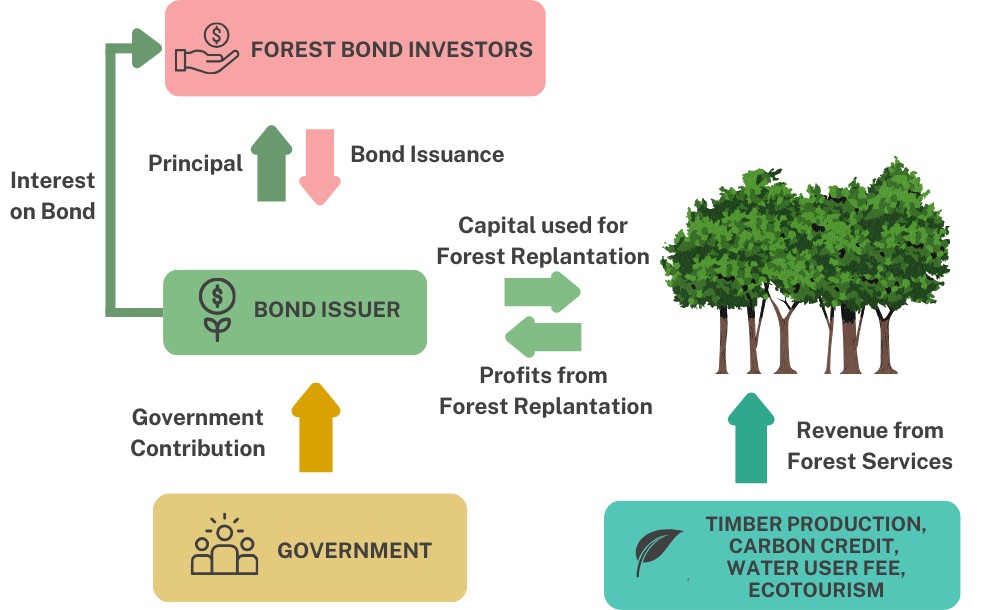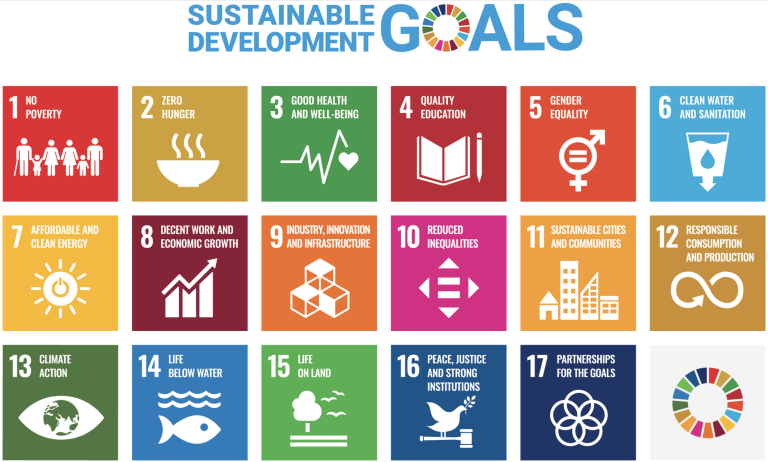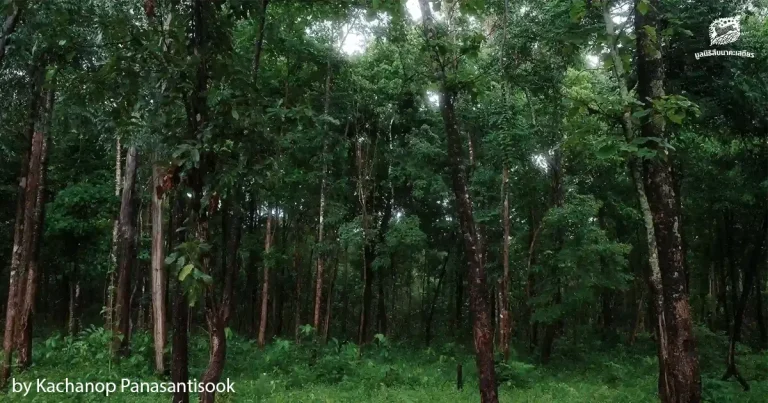The Forest Bond Initiative operates as a system where the flows of ecosystem services are matched by economic flows. The flow chart illustrates how the initial issuance of forest bonds mobilizes capital from savers and investors who, in return, will receive interest payments from their investment in forest bonds. The capital mobilized through the issuance of forest bonds is then used for forest plantations. The beneficiaries of forest services then make payments to those who nurture forest plantations. The revenue stream from forest plantation is derived from five main sources: 1) the revenue from the sale of timber, 2) carbon credits, 3) water-user fees, 4) flood protection, and 5) recreation. These revenue streams are then used to repay forest bond investors, both the principal and the interest.
The government benefits from forest plantations because they help reduce flood and drought damage and provide climate control benefits. This justifies the government making contributions from its revenue stream.
It is crucial to highlight that if the social benefits of forest plantations outweigh the social costs and all stakeholders are fairly compensated, the profitability from forest plantations will serve as an incentive to ensure the long-term continuity and sustainability of the Forest Bond Initiative.

Flow of forest ecosystem services and financial flow





